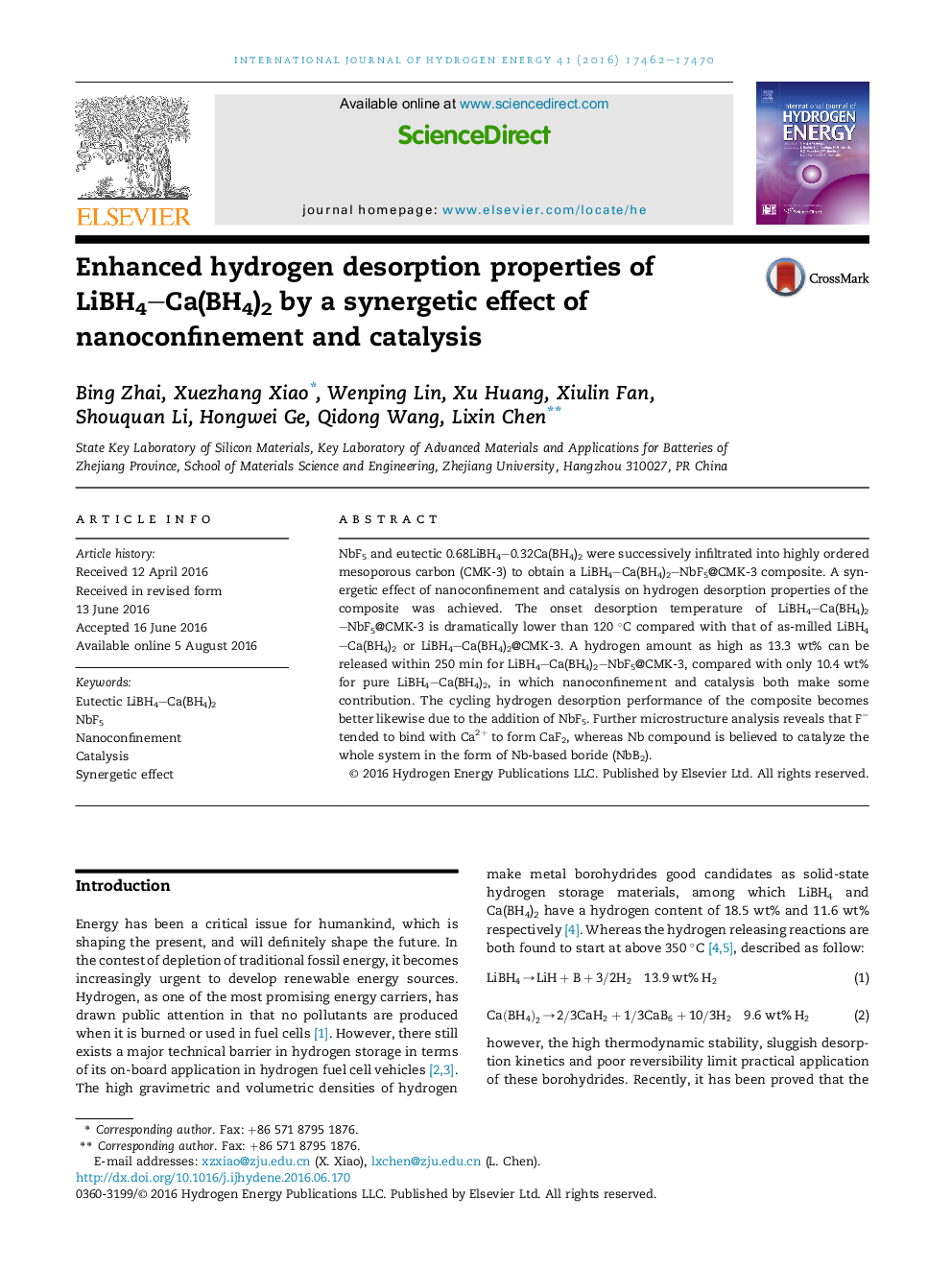| Article ID | Journal | Published Year | Pages | File Type |
|---|---|---|---|---|
| 5148230 | International Journal of Hydrogen Energy | 2016 | 9 Pages |
Abstract
NbF5 and eutectic 0.68LiBH4-0.32Ca(BH4)2 were successively infiltrated into highly ordered mesoporous carbon (CMK-3) to obtain a LiBH4-Ca(BH4)2-NbF5@CMK-3 composite. A synergetic effect of nanoconfinement and catalysis on hydrogen desorption properties of the composite was achieved. The onset desorption temperature of LiBH4-Ca(BH4)2-NbF5@CMK-3 is dramatically lower than 120 °C compared with that of as-milled LiBH4-Ca(BH4)2 or LiBH4-Ca(BH4)2@CMK-3. A hydrogen amount as high as 13.3 wt% can be released within 250 min for LiBH4-Ca(BH4)2-NbF5@CMK-3, compared with only 10.4 wt% for pure LiBH4-Ca(BH4)2, in which nanoconfinement and catalysis both make some contribution. The cycling hydrogen desorption performance of the composite becomes better likewise due to the addition of NbF5. Further microstructure analysis reveals that Fâ tended to bind with Ca2+ to form CaF2, whereas Nb compound is believed to catalyze the whole system in the form of Nb-based boride (NbB2).
Related Topics
Physical Sciences and Engineering
Chemistry
Electrochemistry
Authors
Bing Zhai, Xuezhang Xiao, Wenping Lin, Xu Huang, Xiulin Fan, Shouquan Li, Hongwei Ge, Qidong Wang, Lixin Chen,
